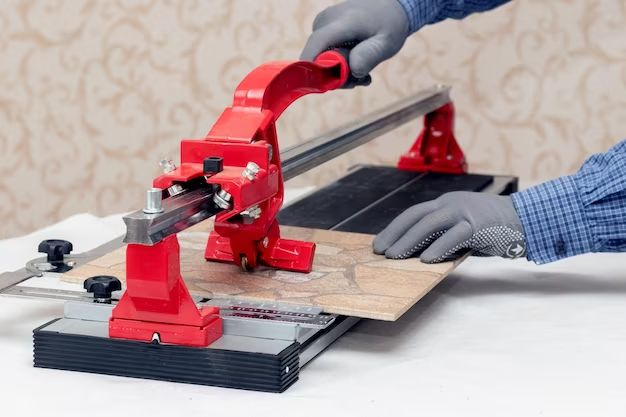Cutting small tiles with a manual tile cutter can be tricky, but with the right techniques it can be done. Here are some tips for getting clean cuts on small tiles using a manual tile cutter.
Page Contents
Use the proper tile cutter
Not all manual tile cutters are suitable for small tiles. You’ll want to use one that has a narrow cutting wheel and a fixed measurement guide. Tile cutters meant for large format tiles usually don’t allow for the precision needed on small tiles.
Secure the tile cutter
It’s important that the tile cutter is firmly secured in place before making cuts. Suction cup feet work well to hold it steady on countertops. You can also clamp the cutter to a sturdy work table.
Position and mark the tile
Place the tile to be cut on the cutter bed, lining it up with the measurement guide. Use a pencil to mark where you want the cut to be made. It helps to hold the tile in place with one hand while marking with the other.
Score the tile
Once marked, position the scoring wheel directly over the pencil line. Apply firm, even pressure as you push the wheel across the tile to score it. Go over the line a few times to create a deep groove.
Snap the tile
After scoring, lift the scoring arm back up. Place one hand on each side of the tile, aligned with the score line. Apply pressure to snap the tile apart along the scored line.
Make multiple passes for curved cuts
For curved cuts, score and snap the tile in short segments rather than trying to cut the entire curve at once. Score, snap, and repeat until the shape is complete. This prevents the tile from breaking in unintended ways.
Use a rail guide
A removable rail guide can be useful when cutting small tiles to consistent widths, like for borders or mosaics. Position the rail at the desired width and butt the tile up against it when scoring.
Cut tiles face up
Cutting small tiles face up helps ensure accuracy since you can see the pattern and line up cuts more precisely. The tile surface also remains supported this way.
Go slowly
Rushing through cuts on small tiles often leads to cracks and chips. Take it slow and steady. Applying too much pressure or force is not necessary.
Use a wet saw for intricate cuts
Very intricate cuts may be beyond the capabilities of a manual tile cutter. A wet saw is better suited for making curved cuts or notches in small tiles.
Smooth any rough edges
Use a rubbing stone or sandpaper to gently smooth any rough edges left from scoring and snapping the tile.
Practice first on scraps
Cutting a few spare tiles allows you to get the hang of the technique before moving on to cutting the tiles you will actually use. Practice makes perfect.
Conclusion
With care and precision, manual tile cutters can produce clean and accurate cuts even on small format tiles. Following these tips will help you achieve professional looking results. Just take your time and remember that you can make minor adjustments as needed. Start out practicing on scrap tiles until you feel comfortable cutting the real tiles for your project.
